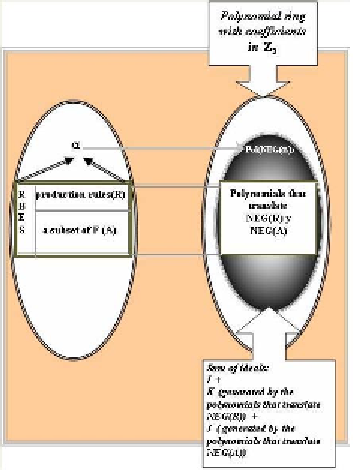Information Technology Reference
In-Depth Information
and
The logical and mathematical ideas to be
presented in this section are based on our works
on the application of GB to automated deduction
in expert systems (Laita, Roanes-Lozano, de
Ledesma, & Alonso, 1999; Roanes-Lozano, Laita,
& Roanes-Macías, 1998) and the previous works
on logic deduction (Alonso, Briales, & Riscos,
1990; Chazarain, Riscos, Alonso, & Briales, 1991;
Hsiang, 1985; Kapur & Narendran, 1984). We have
applied this technique to medical diagnoses (Laita,
Roanes-Lozano, Maojo, de Ledesma, & Laita,
2000; Pérez Carretero, Laita, Roanes-Lozano, &
Laita, 2002) and also GB-based techniques in other
fields like railway interlockings (Roanes-Lozano,
Roanes-Macías, & Laita, 2000) and to automated
theorem proving in geometry (Roanes & Roanes,
2001). Recently, Pfalzgraf (2004) has designed a
new methodology using logical fiberings.
“IF first approach to identification = Clas-
sic
AND second approach to identification =
Classic
AND third approach to identification =
Baroque
THEN final identification = none”.
constructIon of the Ie usIng
cocoa
We shall refer in this section jointly to the theo-
retical background, the implementation and the
user interface.
Background
some Basic algebraic and logic
concepts
Because different audiences are intended to read
this chapter, its logical and mathematical back-
ground shall be described informally.
Definition:
An “ideal” L of a commutative ring
A
is a subset of
A
that is also a ring and such the
product of an element of L by an element of
A
is
always in L.
Figure 2. Theorem graphical illustration
Example:
The multiples of 5 form an ideal in
the ring of the integer numbers.
Remark:
Given a set of polynomials {p, q,
…, s} of a polynomial ring
A
, their algebraic
linear combinations, that is, the polynomials of
the form:
u p + v q + … + w s
where u, v, …, w are polynomials of
A
, form an
ideal of
A
(the so called “ideal generated by the
set {p, q, …, s}).
If L and M are ideals of a polynomial ring
A
, it is easy to prove that L+M, that is, the set of
polynomials obtained by adding a polynomial of L


Search WWH ::

Custom Search